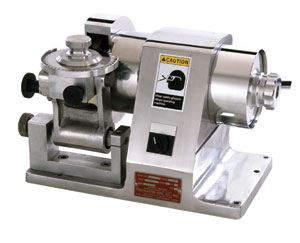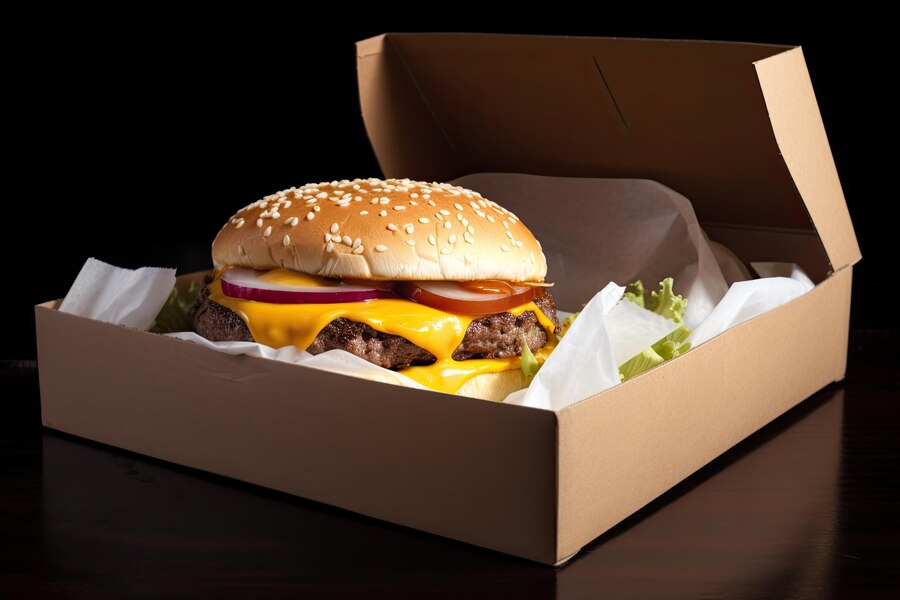In the fast-paced environment of a butchery, maintaining sharp knives is crucial for efficiency, safety, and quality of work. Traditional sharpening methods, while effective, can be time-consuming and require a certain level of skill. Enter the electric knife sharpener – a modern solution that offers convenience, consistency, and precision.
Butcher knife sharpening has never been more accessible or efficient, thanks to these innovative tools.
In this article, we will not only look at the features but go in depth as an extra for you about the higher-end of the industry, as every home cook has knife blade sharpeners but we should always look at the bigger spectrum to get you fully informed, so let’s get into it…
Knife Sharpening Key Features to Look For
When selecting an electric knife sharpener, there are several key features to consider to ensure you’re getting the best tool for your needs:
- Sharpening Stages: A good electric knife sharpener typically offers multiple stages of sharpening. This usually includes a coarse stage for dull knives, a finer stage for honing, and sometimes a polishing stage to give your butcher knives that razor-sharp edge.
- Precision Blade Tools: Look for sharpeners that offer precision angle guides. These guides ensure that the blade is sharpened at the correct angle, which is critical for maintaining the knife’s integrity and sharpness.
- Ease of Use: The best sharpeners are straightforward to operate. Features like automatic sharpening and user-friendly controls can save time and reduce the learning curve, making butcher knife sharpening a breeze.
- Durability: Given the heavy use in butchery, the sharpener should be robust and durable. High-quality materials and a solid build can ensure that the sharpener stands up to daily use.
Top Electric Knife Sharpeners for Butchers
Chef’sChoice Trizor XV EdgeSelect
The Chef’sChoice Trizor XV EdgeSelect is a top contender in the world of electric knife sharpeners. Known for its reliability and performance, it offers a three-stage sharpening system that provides precise and razor-sharp edges. The Trizor XV converts traditional 20-degree factory edges into high-performance 15-degree edges, perfect for butcher knife sharpening.
Its diamond abrasives and advanced flexible spring guides ensure a consistent and sharp edge every time.
Work Sharp Culinary E5
The Work Sharp Culinary E5 is another excellent choice for professional butchers. It features an intuitive design with three sharpening settings and built-in angle guides for precision. The E5’s flexible abrasive belts are gentle on knives, reducing wear and tear.
This sharpener also includes a honing stage to maintain the edge between full sharpenings, making it ideal for abattoir knife maintenance.
Wüsthof Electric Sharpener
The Wüsthof Electric Sharpener is designed specifically for butcher tool efficiency. It offers a three-stage sharpening process with diamond abrasives for effective and consistent sharpening.
The Wüsthof sharpener is known for its ease of use and precision, making it a favourite among professionals. Its compact design also means it doesn’t take up too much space in a busy butchery environment.
Presto EverSharp
For those looking for an affordable yet reliable option, the Presto EverSharp is a great choice. This electric knife sharpener offers a two-stage sharpening system that delivers sharp and durable edges.
Its Sapphirite sharpening wheels are designed to create a professional edge in seconds. The Presto EverSharp is user-friendly and ideal for small butcheries or those new to electric sharpeners.
Benefits of Using Electric Knife Sharpeners
The advantages of using electric knife sharpeners in a butchery are numerous:
- Consistency: Electric sharpeners provide a consistent sharpening angle, ensuring that each knife is sharpened to the same high standard. This consistency is crucial for precision blade tools used in professional settings.
- Time Efficiency: Manual sharpening can be time-consuming. Electric sharpeners significantly reduce the time needed to achieve a sharp edge, allowing butchers to focus more on their work and less on maintenance.
- Ease of Use: With features like automatic sharpening and built-in angle guides, even less experienced users can achieve professional results. This ease of use enhances butcher tool efficiency, streamlining operations in a busy environment.
- Longevity of Tools: Regular and proper sharpening extends the life of knives and other precision blade tools. By maintaining sharp edges, butchers can reduce the frequency of knife replacements, leading to cost savings.
Finding the Right Supplier
In South Africa, finding reliable suppliers for Johannesburg knife sharpener suppliers is crucial for butchers looking to invest in high-quality tools.
Reputable suppliers offer a range of products and can provide valuable advice on selecting the best electric knife sharpener for your needs.
TIP: Your best bet given the history of the industry and the fact they are on every continent around the globe is Kentmaster South Africa. You’ll find them at every EXPO and there’s no machinery top to bottom of the industry they can’t source for you.
Technical Aspects of Knife Sharpening in the Meat Industry
The meat processing industry relies heavily on precision and efficiency. The sharpness of knives and blades directly impacts the quality and speed of meat processing. In abattoirs and slaughterhouses, where large machinery is in constant use, maintaining sharp blades is essential for operational success.
This requires a thorough understanding of the technical aspects of knife sharpening.
Sharpening Techniques for Large Machinery Blades
Large machinery blades used in abattoirs are subject to intense wear and tear. These blades must be maintained at peak sharpness to ensure efficient cutting and processing.
The process involves several key steps:
- Grinding: This is the first step in sharpening large blades. Grinding removes the dull edge and reshapes the blade to its original angle. This step requires precision machinery, such as industrial grinders, that can handle the size and hardness of the blades.
- Honing: After grinding, the blade is honed to refine the edge. Honing aligns the microscopic teeth along the edge of the blade, resulting in a sharper and more durable edge. This process is essential for achieving the fine cutting-edge needed in high-demand environments like South Africa abattoir care.
- Polishing: The final step in the sharpening process is polishing. Polishing removes any remaining burrs and smooths the edge, ensuring a clean and precise cut. High-quality polishers are used to achieve a mirror-like finish on the blade, enhancing both its performance and longevity.
Equipment and Tools Used
The equipment used for professional knife sharpening in abattoirs and slaughterhouses is specialised and designed to handle the demands of the industry.
Key tools include:
- Industrial Grinders: These machines are capable of grinding large blades to the precise angles required for efficient meat processing. They are robust, durable, and can operate continuously, making them ideal for the rigorous demands of slaughterhouse maintenance.
- Honing Machines: These machines ensure that the blades are honed to a fine edge. They often feature automated systems that adjust the angle and pressure to achieve the best results.
- Polishers: High-speed polishers are used to finish the blades, giving them a smooth, sharp edge. These machines are essential for achieving the final polish that ensures a clean cut every time.
Regular Maintenance and Quality Control
Regular maintenance and quality control are critical components of abattoir knife maintenance.
This involves:
- Scheduled Sharpening: Establishing a regular sharpening schedule ensures that blades are always in optimal condition. This includes daily, weekly, and monthly maintenance routines, tailored to the specific needs of the abattoir.
- Quality Inspections: Regular inspections of the blades and knives help identify any issues early. This proactive approach minimises downtime and ensures that the equipment is always ready for use.
- Record Keeping: Maintaining detailed records of sharpening and maintenance activities helps track the performance of the blades and schedule future maintenance tasks.
Advancements in Knife Sharpening Technology
The field of knife sharpening has seen significant advancements in recent years, particularly with the integration of technology.
Modern sharpening equipment incorporates features such as:
- Automated Systems: Automated sharpening systems provide consistent and precise results. These systems are designed to adjust the sharpening angle and pressure automatically, reducing the margin for error and ensuring uniformity.
- Digital Monitoring: Advanced sharpening machines feature digital monitors that provide real-time feedback on the sharpening process. This includes data on blade angles, pressure, and sharpening time, allowing for precise adjustments and better control.
- Environmentally Friendly Solutions: As sustainability becomes more important, the use of environmentally friendly lubricants and sharpening materials has increased. These solutions reduce the environmental impact of the sharpening process and contribute to overall sustainability efforts in the meat processing industry.
OVERVIEW
The technical side of professional knife sharpening in the meat processing industry, particularly within South Africa’s abattoirs and slaughterhouses, is a complex and crucial aspect of maintaining efficiency and productivity.
By understanding and implementing advanced sharpening techniques and using specialised equipment, these facilities can ensure that their blades and knives remain in top condition.
Regular maintenance, quality control, and the adoption of modern technologies are essential for achieving the best results and extending the life of abattoir equipment.
SUMMARY
Investing in a top-tier electric knife sharpener is a game-changer for professional butchers. These tools provide the efficiency, precision, and consistency needed to maintain sharp knives and ensure smooth operations. From the Chef’sChoice Trizor XV to the Presto EverSharp, there are options to suit every budget and requirement. By focusing on key features and choosing the right supplier, butchers in South Africa can enhance their abattoir knife maintenance and boost overall productivity.





